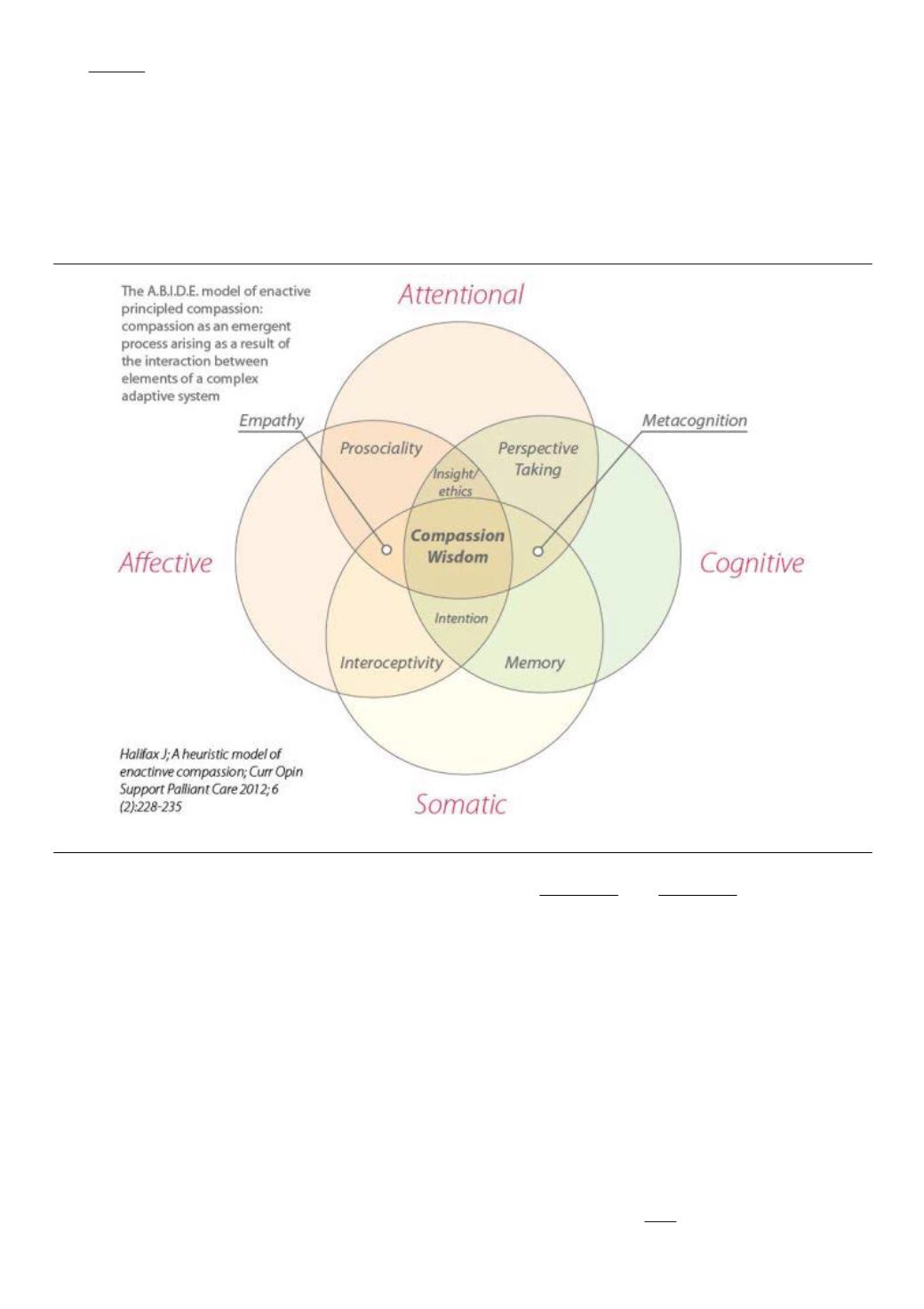
see
in relation to the G.R.A.C.E. intervention that is designed for compassion-based
clinician/patient interactions.
Training others in the cultivation of compassion, particularly clinicians working in the end-of-life
care field, necessitates that we clarify what we mean by compassion, what the sub-components of
compassion are, what the processes that nourish and enhance compassion are and, in the case of
clinicians, what sustains compassion in giving care to those who are suffering from a catastrophic
illness or injury.
Figure 1:
The A.B.I.D.E. Model
In the present model and in line with other views (see also
and
, compassion is
an emergent process arising out of the interaction of non-compassion processes.
The A.B.I.D.E. model is thus divided into three interdependent experiential areas that prime
compassion: the A/A Axis, giving rise to attentional and affective balance; the I/I Axis, reflecting the
cognitive domain and relating to the cultivation of intention and insight that support discernment;
and the E/E Axis, or embodied and engaged processes that support engaged responses to the
presence of suffering, and foster ethical grounding, eudaemonia and equanimity. These axes are
non-linear and co-emergent.
The A/A Axis and Attentional Balance
The A/A Axis encompasses the subjective experiences of attention and affect; these domains
support mental balance. The first part of the A/A Axis is attention. Attention forms the stable base
of compassion; it is both biased by and contingent on affect and context
William James, the
nineteenth century psychologist, wrote that “Everyone knows what attention is. It is the taking
213


